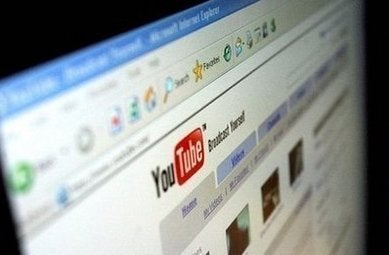
When the flotilla incident erupted into a media frenzy last week, I turned to two sources of information: The Economist and Facebook. The former provided a more bookish reflection on the event's significance within the context of the standoff between Israel and Hamas, while Facebook let me know what friends and colleagues thought about it, from a number of different perspectives.
Some comments on my friends' Facebook statuses were carefully phrased, while others were slung from the gut. Yet what struck me when reading them was how much videos have taken on new meaning in the age of social networking, and particularly on its leading website, Facebook. A remarkable number of friends would make a statement about Israel or Hamas and then cite a YouTube video for support (e.g., "CNN reports that ... " or "Fox News questions ... "). It was as though each personal status on Facebook had become a thesis, and YouTube videos had become crucial points of support for them.
Yet because of the dynamic nature of Facebook, these theses were hardly static assertions. Many of my friends' statuses were then bombarded with comments (e.g., "I disagree ... "; "God bless you ... "; "I am so worried ... "). My friends were engaging in dialogue with one another about a difficult issue, especially close to Muslim and Jewish communities, in an open online forum. And given that Facebook is aspiring to reach a new milestone of half a billion users, it is bringing people into dialogue with one another about issues they may have never otherwise discussed. YouTube has remained a central fixture of that dialogue -- even enabling people to come into dialogue with unidirectional news reports and television segments and use them to clarify discussions and bolster assertions.
The idea of online videos as a basis for structured dialogue was brought to my attention through an article by Stephen Pihlaja in the Journal of Inter-Religious Dialogue. As he notes in "The Pope of YouTube: Metaphor and Misunderstanding in Atheist-Christian YouTube Dialogue":
Although the potential remains for YouTube to become a powerful tool in bringing together people of starkly different ideological positions, how these dialogues should develop and what is appropriate behavior in interaction remains a difficult issue. Close discourse analysis of the interaction between users (particularly analysis of metaphor use) holds strong potential for describing how misunderstanding is taking place.
While I agree that dialogue is often impeded by different understandings of the same terms or metaphorical representations, it would seem that YouTube itself engenders a unique kind of interaction. It may well be the closest thing to in-person dialogue, as dialogue partners often video their own answers to viewers' comments or cite other personal or television-based film clips that the website makes available. You can often actually see the person with whom you are in dialogue, hear his or her voice, and gain interpretive nuance from the body language he or she projects.
Given the often personal nature of YouTube, some might argue that it is the worst of all possible scenarios for interchange. People make themselves vulnerable by putting their thoughts online in the most personal of mediums, yet responses are not governed by in-person social norms and decorum, so much as the online social free-for-all.
In some cases, this may indeed be true on YouTube itself, as Pihlaja makes clear through his article. Yet Facebook may again transform these common online practices. Facebook 'friends' have a reputation to uphold. They interact with the same people on a regular basis and are thereby held more responsible, both online and in person, for the remarks they make.
While YouTube itself remains a precarious platform for discussion, its use in conjunction with Facebook has expanded the scope of inter-religious dialogue. Dialogue need not be confined solely to the formal meeting room or conference. It can now happen all the time, in a more organic way.
Yet within this web of potential, there remains a dearth of carefully honed videos with which to engage people in online dialogues that do not hinge upon the news and the prisms through which it is refracted. A handful of organizations, including the Interfaith Youth Core, Parliament of the World's Religions, Intersections International, and Journal of Inter-Religious Dialogue, have sought to fill it in part. But such efforts must be expanded.
It is time for all inter-religious organizations to seize upon this opportunity for video-based dialogue and imbue it with meaningful content on an ongoing basis. Doing so would amplify crucial messages of collaboration and intellectual cross-pollination and create reverberations throughout the new networks of social media.
